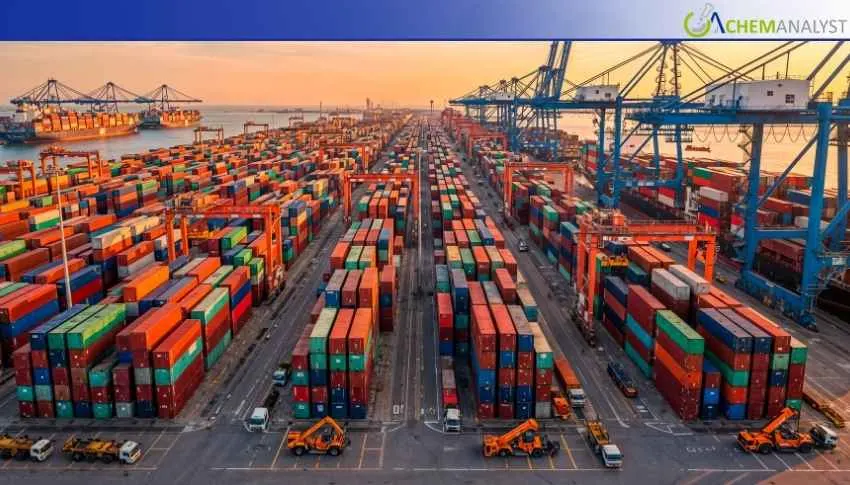Welcome To ChemAnalyst

The first week in October has been busy for the world freight market, with declining container spot rates, regulatory action in the United States, persistent geopolitical disruptions, and seasonal slowdown due to Golden Week in China. Combined, they are creating a challenging operating landscape for ocean carriers.
The first week in October has been busy for the world freight market, with declining container spot rates, regulatory action in the United States, persistent geopolitical disruptions, and seasonal slowdown due to Golden Week in China. Combined, they are creating a challenging operating landscape for ocean carriers.
China's week-long national holiday (Oct 1–7) brought factory production and cargo flows to a crawl, prompting mass blank sailings and service reductions. Flag carriers released schedule adjustments to cope with lower volumes of exports, especially on the Transpacific and Asia–Europe routes. Terminals at major Chinese ports like Shanghai Port, Ningbo-Zhoushan Port, and Yantian Port were running below capacity during the Golden week , prompting weaker demand for ship space. Though, analysts anticipate a sharp rebound in demand in mid- October as factories resume operations potentially triggering a temporary cargo rush that could constrain vessel space and equipment availability.
Even with this expected rebound, global spot container freight rates declined to record lows since the beginning of 2024, as carriers lost pricing discipline with ongoing soft demand and overcapacity. Spot Asia–US West Coast rates reported significant declines (around 40%), with the same trends on Asia–Europe routes (around 50%). Market analysts are cautioning that this ongoing pressure may trigger a new round of price competition once the contract renewal season approaches. Carriers are beginning to look at more forceful blank sailing tactics in order to shore up rate levels.
Geopolitical tensions in the Red Sea area continue to have an effect on container routing and cost. While there is speculation about a slow-down Suez Canal transit recovery, most carriers are still being cautious, keeping around-the-Cape of Good Hope detours. However, these extended voyages raise fuel consumption and voyage expense, further squeezing margins during a period of declining demand.
In a big regulatory move, the U.S. government proposed to charge new port fees on ships constructed or owned by Chinese companies. The policy, which is likely to come into force in mid-October i.e. 14th October, would add billions of dollars to the costs of major carriers. Estimates are that the top 10 carriers would have to pay US$3.2 billion in total fees in 2026. Several major carriers (e.g., ONE, Maersk, CMA CGM) have stated that they will not automatically forward surcharges to customers. In the future, carriers will have to move quickly to defend margins and keep things stable.
In the short term, global freight markets face continued rate pressure and cost escalation. While a post–Golden Week cargo rebound may offer temporary relief on Asia–Europe and Transpacific lanes, overcapacity and weak demand will limit upside. New U.S. port fees and extended Suez detours will further squeeze margins. Carriers must act decisively—tightening capacity, redeploying vessels strategically, and securing early contracts—to stabilize earnings. Without swift adjustments, operational and pricing pressures will persist through late October.
We use cookies to deliver the best possible experience on our website. To learn more, visit our Privacy Policy. By continuing to use this site or by closing this box, you consent to our use of cookies. More info.
